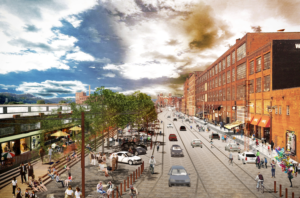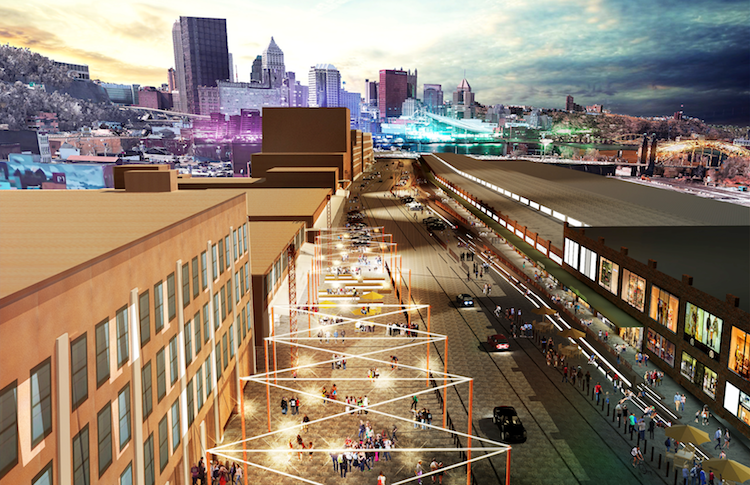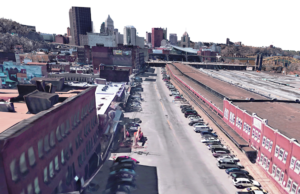Imagine a “super street” in the heart of Pittsburgh, Pennsylvania‘s Strip District, with a sparkling aggregate surface, lined in places with honey locust trees.
City planners are using that design concept as a working blueprint for improving five blocks of Smallman Street.The design by Stoss Landscape Urbanism in Boston, Antunovich Associates of Arlington, Virginia, Sam Schwartz Engineering of Fairfax, Virginia, and Fennessy Consulting of Stoughton, Massachusetts, takes into consideration public feedback from several meetings about the project that’s meant to complement a planned renovation of the mostly vacant produce auction house.
 “You don’t have to convince people this is a special place—it’s an important part of Pittsburgh’s heritage and its identity. People know it and love it. I think we’ve done our best to work with the community and the team to have a proposal to renew that special identity, without taking away what makes it special now, and at the same time making it a comfortable, safer experience,” said Ray Gastil, director of the city Planning Department.
“You don’t have to convince people this is a special place—it’s an important part of Pittsburgh’s heritage and its identity. People know it and love it. I think we’ve done our best to work with the community and the team to have a proposal to renew that special identity, without taking away what makes it special now, and at the same time making it a comfortable, safer experience,” said Ray Gastil, director of the city Planning Department.
In the pedestrian-friendly new design, five-foot buffer zones would keep you from having to watch out for cars and trucks traveling two middle lanes. Sidewalks would widen into public terraces, with angled parking spaces and steps leading to an expanded dock along the Produce Terminal.
Artist’s renderings of redesigned Smallman Street via Pittsburgh Planning Department.
See earlier REVITALIZATION article about redevelopment of The Produce Terminal.


